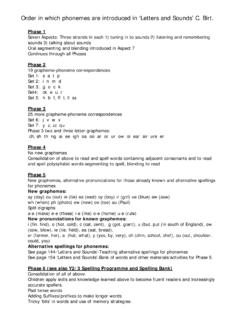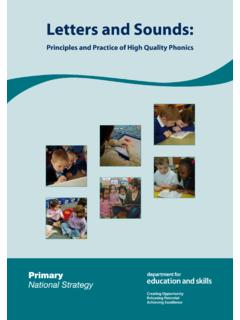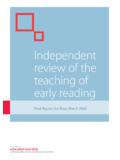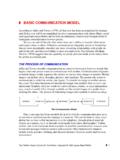Letters And Sounds Phase 1 Aspect 2
Found 10 free book(s)Order in which phonemes are introduced in ‘Letters and ...
www.stoswaldsdurham.netOrder in which phonemes are introduced in ‘Letters and Sounds’ C. Birt. Phase 1. Seven Aspects: Three strands in each 1) tuning in to sounds 2) listening and remembering sounds 3) talking about sounds . Oral segmenting and blending introduced in Aspect 7 . Continues through all Phases . Phase 2. 19 grapheme-phoneme correspondences . Set 1 ...
Letters and Sounds - GOV.UK
assets.publishing.service.gov.ukLetters and Sounds: Phase One Seven aspects and three strands Phase One activities are arranged under the following seven aspects. Aspect 1: General sound discrimination – environmental sounds Aspect 2: General sound discrimination – instrumental sounds Aspect 3: General sound discrimination – body percussion Aspect 4: Rhythm and rhyme
Letters and Sounds - GOV.UK
assets.publishing.service.gov.ukLetters and Sounds: Phase One. Seven aspects and three strands. Phase One activities are arranged under the following seven aspects. Aspect 1: General sound discrimination – environmental sounds Aspect 2: General sound discrimination – instrumental sounds Aspect 3: General sound discrimination – body percussion Aspect 4: Rhythm and rhyme
Letters and Sounds, Phase 1, Aspect 1 - YorOK
www.yor-ok.org.ukLetters and Sounds, Phase 1, Aspect 1 General Sound Discrimination – Environmental Sounds Tuning into Sounds Main Purpose: To develop children’s listening skills and awareness of sounds in the environment Activity 2 play the listening game with them. Listening to sounds around the home. Preparation An quiet area with few visual distractions.
Letters and Sounds - Phase 1 Aspect 4
www.yor-ok.org.ukLetters and Sounds - Phase 1 – Aspect 4 Rhythm and Rhyme Tuning into sounds Main purpose: To experience and appreciate rhythm and rhyme and to develop awareness of rhythm and rhyme in speech Preparation A quiet area with space for a circle of children Collect a selection of rhyming objects e.g. cat, hat, bat, mat or fox, box, socks.
Phonics Planning 3 Edition - LCP
www.lcp.co.ukIn the original Letters and Sounds document Phase 5 was always meant to be taught in Year 1 and Phase 6 was taught in Year 2. Assuming this is still the same I have included all content from the new National Curriculum for each year group in the relevant phase. For example, new content in Year 1 will be found in Phase 5 and new
Glossary of Little Wandle Letters and Sounds Revised ...
www.littlewandlelettersandsounds.org.ukthe end of Year 1. Its sole purpose is to determine whether a child can phonically decode single words to an annually predetermined national standard. Phonics The method by which we teach children to read by recognising the connections between the sounds of spoken words (phonemes) and the letters that are used to write them down (graphemes).
A SCHOOL READINESS/PREPARATORY PROGRAMME (5 …
www.nied.edu.na2. Recognises some letters of the alphabet by name 3. Recognises some letter sounds 4. Tells a simple story and recounts events in sequence 5. Knows some nursery rhymes, songs and chants 6. Has early phonological awareness, e.g. rhyming and initial sound awareness 7. Is beginning to link some letters with sounds they make, e.g. m says mmm 8.
Independent review of the teaching of
dera.ioe.ac.uk1. Summary 2. The remit for the review 1 3. Evidence gathering 5 4. Background 6 5. Aspect 1:what best practice should be expected 30 in the teaching of early reading and synthetic phonics 6. Aspect 2:how this relates to the development 89 of the birth to five framework and the development and renewal of the National Literacy Strategy
BASIC COMMUNICATION MODEL
home.snu.edu(letters, newspapers, etc.), or through visual media (television, photographs). Verbal, written, and visual media are three examples of possible communication channels used to transmit messages between senders and receivers. Other transmission channels include touch, gestures, clothing, and physical distances between sender and receiver ...
Similar queries
Which phonemes are introduced in ‘Letters, Which phonemes are introduced in ‘Letters and Sounds, Phase 1, Sounds 2, Sounds, Aspect, Phase 2, Letters and Sounds, Phase, Aspect 1, Sounds Aspect 2, Sounds Aspect, Phase 1 Aspect, Letters, A SCHOOL READINESS/PREPARATORY PROGRAMME 5, Aspect 2, Communication









